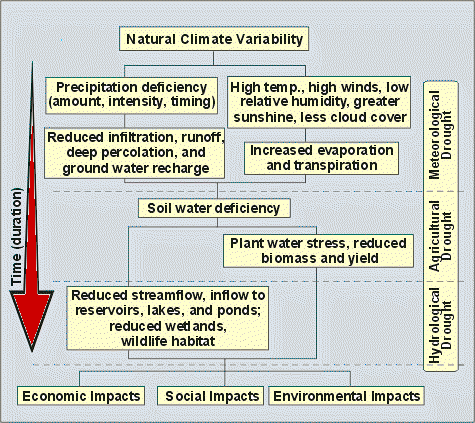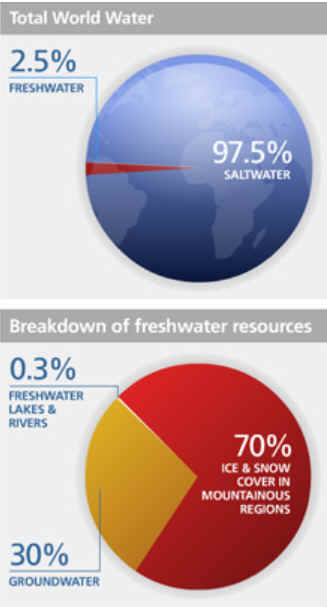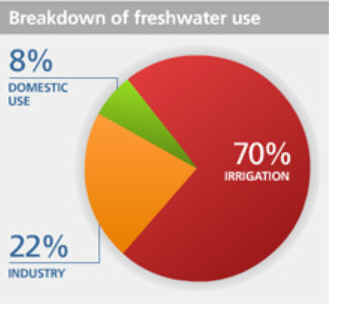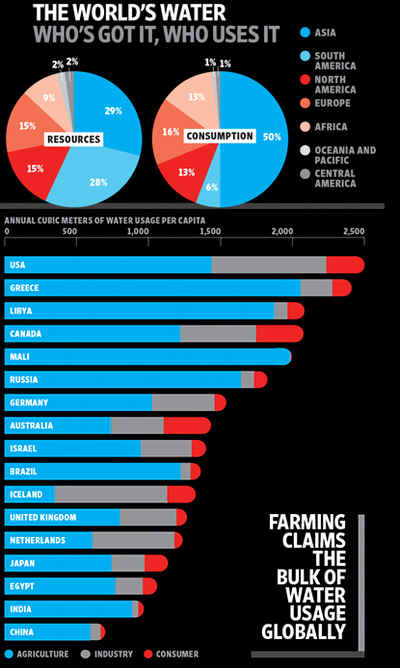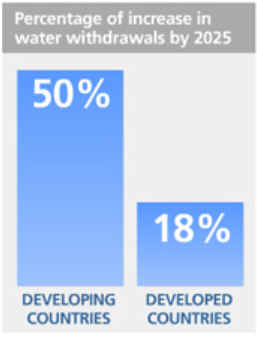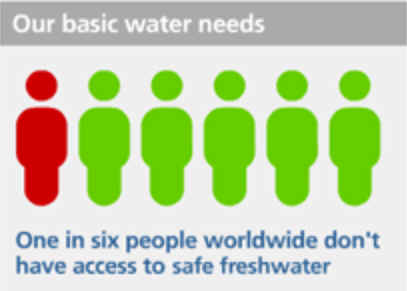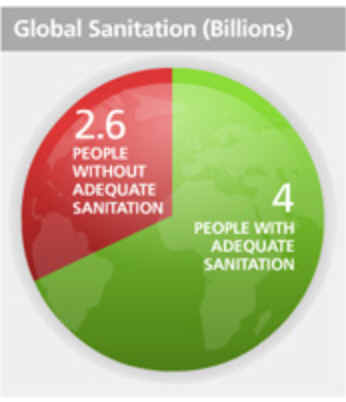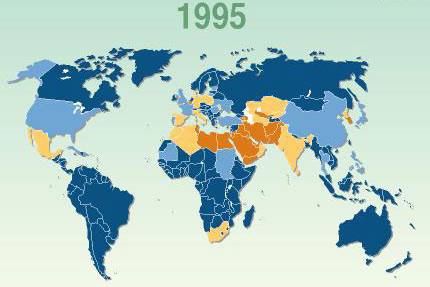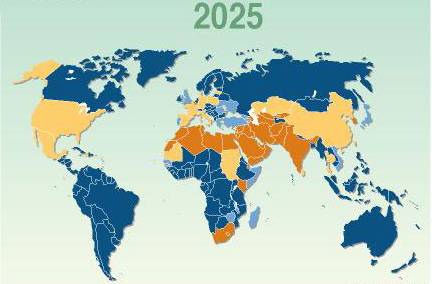
|
||||||||||||
|
|
|
Water Crisis
Drought
Drought is a condition of moisture deficit sufficient to have an adverse effect on vegetation, animals, and man over a sizeable area A drought is defined as "a period of abnormally dry weather sufficiently prolonged for the lack of water to cause serious hydrologic imbalance in the affected area." -Glossary of Meteorology (1959). In easier to understand terms, a drought is a period of unusually persistent dry weather that persists long enough to cause serious problems such as crop damage and/or water supply shortages. The severity of the drought depends upon the degree of moisture deficiency, the duration, and the size of the affected area. There are actually four different ways that drought can be defined.
While much of the weather that we experience is brief and short-lived, drought is a more gradual phenomenon, slowly taking hold of an area and tightening its grip with time. In severe cases, drought can last for many years, and can have devastating effects on agriculture and water supplies. According to United Nations estimates, one third of the world's population lives in areas with water shortages and 1.1 billion people lack access to safe drinking water and 2.6 billion people are without adequate water for sanitation. Consequently disease and significant deaths arise from people using contaminated water supplies; these effects are particularly pronounced for children in underdeveloped countries, where 3900 children per day die of diarrhea alone Climate change has also provoked more frequent and intense droughts in sub-tropical areas of Asia and Africa, exacerbating shortages in some of the world's poorest countries. According to a UN climate report, the Himalayan glaciers that are the sources of Asia's biggest rivers - Ganges, Indus, Brahmaputra, Yangtze, Mekong, Salween and Yellow - could disappear by 2035 as temperatures rise. While the world's population tripled in the 20th century, the use of renewable water resources has grown six-fold. Within the next fifty years, the world population will increase by another 40 to 50 %. This population growth - coupled with industrialization and urbanization - will result in an increasing demand for water and will have serious consequences on the environment. Water Resources
The total
volume of water on Earth is about 1.4 billion km3. The volume of
freshwater resources is around 35 million km3, or about 2.5 percent of the
total volume. Water Uses How the world
uses freshwater:
Water
withdrawals are predicted to increase by 50 percent by 2025 in developing
countries, and 18 per cent in developed countries. Drinking Water and Sanitation
Today 2.5
billion people, including almost one billion children, live without even
basic sanitation. Every 20 seconds, a child dies as a result of poor
sanitation. That's 1.5 million preventable deaths each year.
Projected Water Scarcity in 2025
By 2025, 1.8 billion people will live in countries or regions with absolute water scarcity. Most countries in the Middle East and North Africa can be classified as having absolute water scarcity today. By 2025, these countries will be joined by Pakistan, South Africa, and large parts of India and China. This means that they will not have sufficient water resources to maintain their current level of per capita food production from irrigated agriculture—even at high levels of irrigation efficiency—and also to meet reasonable water needs for domestic, industrial, and environmental purposes. To sustain their needs, water will have to be transferred out of agriculture into other sectors, making these countries or regions increasingly dependent on imported food.
Many African countries, with a population of nearly 200 million people, are facing serious water shortages. By the year 2025, it is estimated that nearly 230 million Africans will be facing water scarcity, and 460 million will live in water-stressed countries
Credit: NOAA, The National Weather Service, The United Nations, National Drought Mitigation Center University of Nebraska-Lincoln,UN,WMO |
